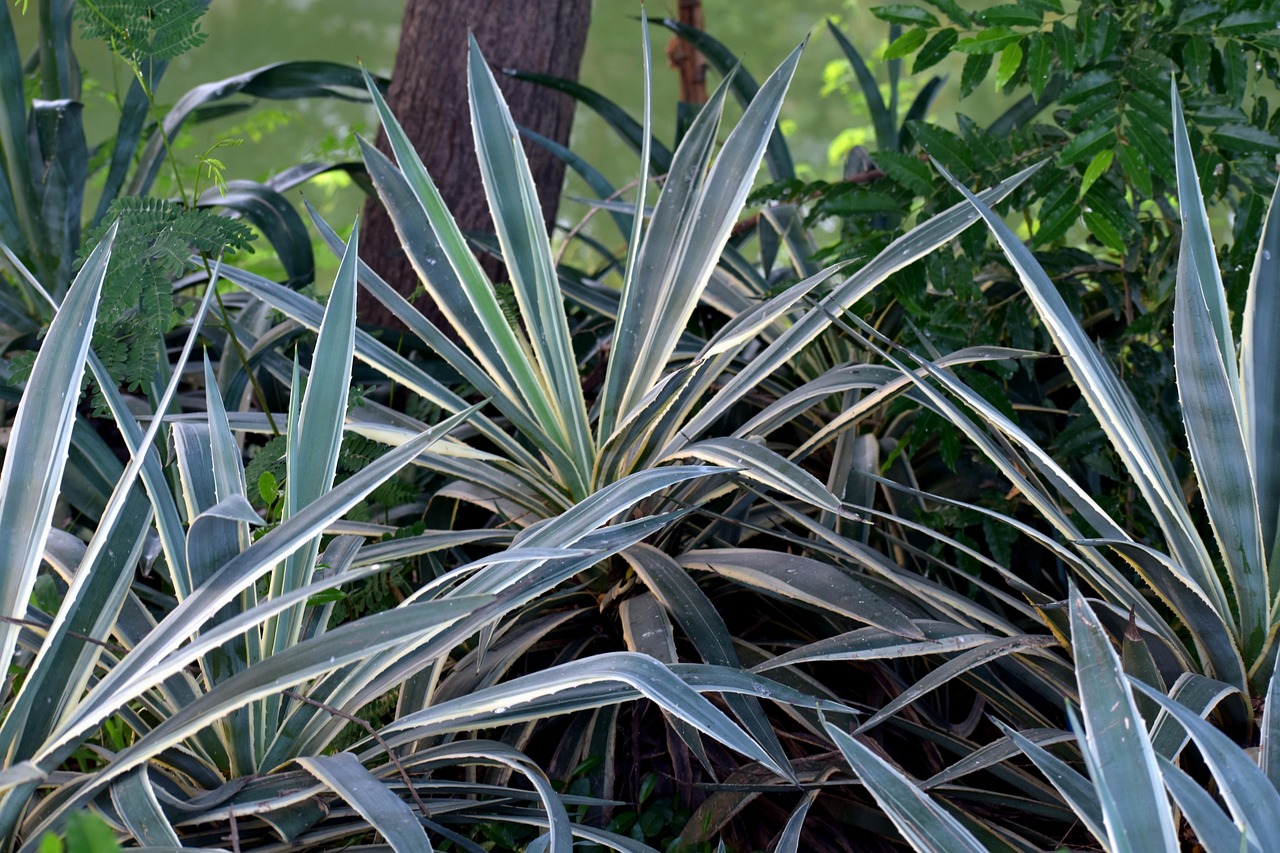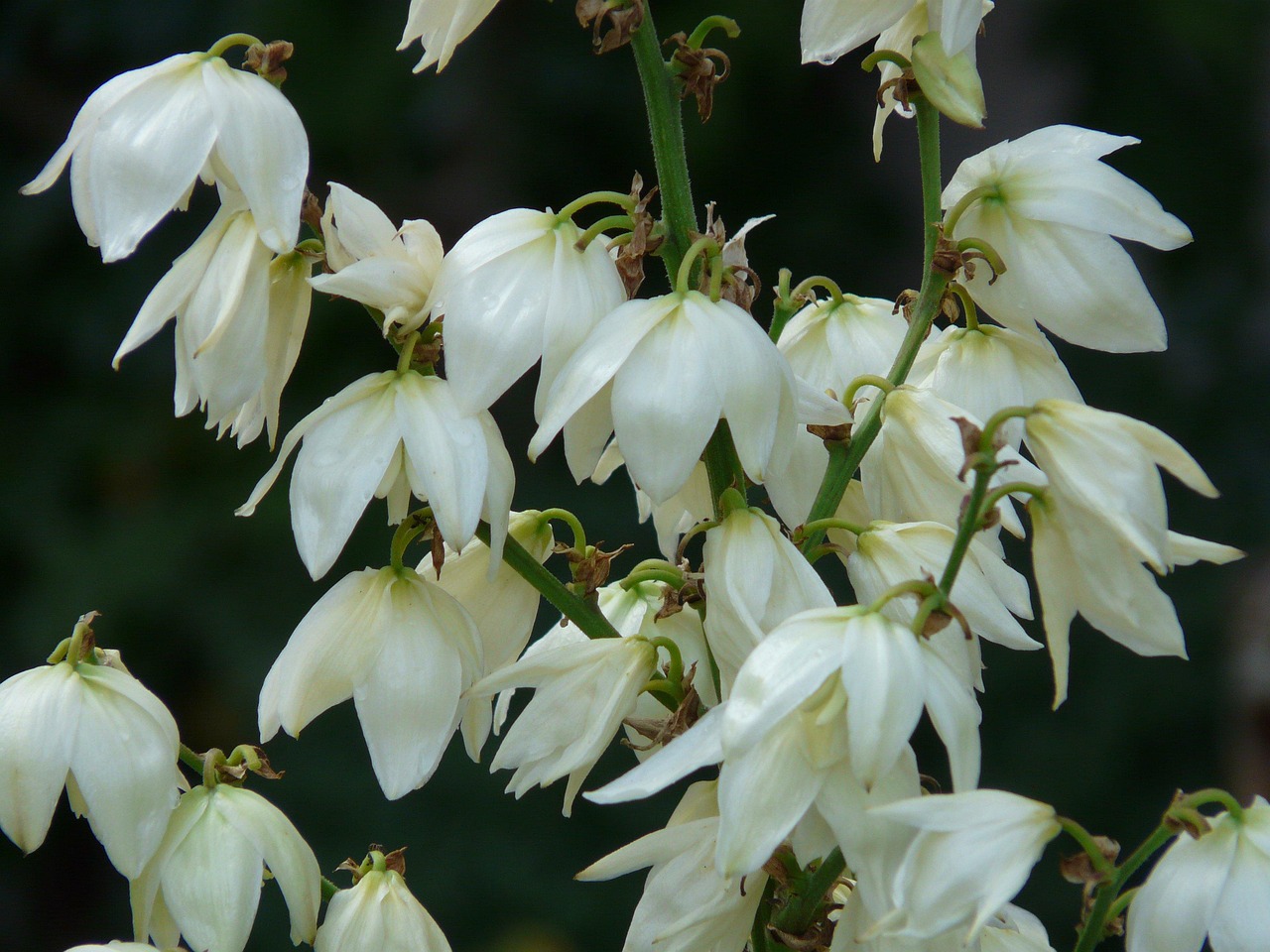The yucca plant, also known as cassava, is a nutritious root vegetable. It can be safely prepared for consumption when cooked properly. Raw yucca contains cyanogenic compounds, which can be toxic, but cooking eliminates these risks, making it a versatile ingredient in various dishes.
The yucca plant, native to the hot, dry regions of the Americas, serves multiple purposes. Its starchy root is a staple in many diets around the world. Known scientifically as Manihot esculenta, yucca is often used in traditional dishes and modern cuisine. It is rich in carbohydrates, vitamins, and minerals, which contribute to its popularity as a food source.

Yucca is commonly confused with other plants like yuca (the Spanish word for cassava) and yucca (the ornamental plant). This article focuses on the edible variety, particularly the root. The root can be processed into flour, chips, or served as a side dish. When prepared correctly, yucca is not only safe to eat but also offers various culinary possibilities.
Health Benefits of Yucca
Yucca root is known for its numerous health benefits. It is a gluten-free alternative to wheat and can be used in various recipes. Here are some of the advantages of including yucca in your diet:
- Nutrient-Rich: Yucca is high in carbohydrates and provides essential vitamins such as vitamin C and several B vitamins.
- Digestive Health: The fiber content in yucca promotes healthy digestion and can help prevent constipation.
- Anti-Inflammatory Properties: Yucca contains antioxidants that may help reduce inflammation and improve overall health.
- Energy Boost: The high carbohydrate content makes it an excellent source of energy, particularly for active individuals.
To fully appreciate the nutritional profile of yucca, it is essential to understand its composition. The following table outlines some key nutrients found in 100 grams of cooked yucca:

| Nutrient | Amount (per 100g) |
|---|---|
| Calories | 160 |
| Carbohydrates | 38g |
| Protein | 1.4g |
| Fat | 0.3g |
| Fiber | 1.8g |
| Vitamin C | 20mg |
| Calcium | 16mg |
| Iron | 0.3mg |
Safe Preparation of Yucca
Preparing yucca safely is crucial to avoid any toxic effects from the raw root. The following steps outline the proper method for preparing yucca before cooking:
- Selecting Yucca: Choose firm, unblemished roots that feel heavy for their size. Avoid any that have dark spots or soft areas.
- Peeling: Use a sharp knife to carefully peel away the tough outer skin. Be cautious as the skin can be tough to cut through.
- Cutting: Slice the peeled root into smaller pieces to facilitate boiling or steaming.
- Soaking: Optional soaking in water for a few hours can help remove some of the cyanogenic compounds.
- Cooking: Boil or steam the pieces until tender. This usually takes about 20-30 minutes. Ensure all pieces are fully cooked through.
- Serving: Once cooked, yucca can be mashed, fried, or added to soups and stews.
The cooking process not only enhances the flavor but also makes it safe for consumption. Remember to discard any water used during cooking if soaking was performed, as it may contain residual toxins.
Incorporating yucca into your meals can add variety and provide health benefits. It is used in various cuisines, from Latin American to African dishes. Understanding how to prepare it safely expands your culinary options and allows you to enjoy this unique root vegetable.

Culinary Uses of Yucca
Yucca is a versatile ingredient that can be incorporated into a variety of dishes. Its unique texture and flavor provide a great base for both traditional and modern recipes. Below are some popular culinary uses for yucca that showcase its adaptability.
Traditional Dishes
Many cultures have embraced yucca as a staple food. Here are some traditional dishes featuring yucca:
- Yucca Fries: These are similar to French fries but made from boiled and then fried yucca. They are crispy on the outside and soft on the inside.
- Mashed Yucca: A creamy alternative to mashed potatoes, boiled yucca is mashed and often mixed with butter, garlic, or herbs.
- Yucca Soup: A hearty soup made with boiled yucca, vegetables, and spices. It is commonly found in Latin American cuisine.
- Fufu: A starchy dough-like dish made from boiled and pounded yucca, often served with stews and sauces in African cuisine.
Modern Recipes
In addition to traditional dishes, yucca can be creatively used in modern cooking. Here are some innovative ideas:

- Yucca Chips: Thinly sliced yucca, fried until crispy, can serve as a healthy snack alternative to potato chips.
- Yucca Flour: Ground yucca can be used in gluten-free baking, including breads and pastries.
- Stir-Fries: Cubed, cooked yucca can be added to stir-fried vegetables and proteins for added texture.
- Salads: Roasted or boiled yucca can be included in salads for extra crunch and nutrition.
Nutritional Considerations
While yucca is nutritious, it is essential to consume it in moderation and as part of a balanced diet. Understanding its nutritional profile helps you make informed dietary choices. Below is a comparison of yucca with another common starch, potatoes:
| Nutrient | Yucca (100g) | Potato (100g) |
|---|---|---|
| Calories | 160 | 77 |
| Carbohydrates | 38g | 17g |
| Protein | 1.4g | 2g |
| Fat | 0.3g | 0.1g |
| Fiber | 1.8g | 2.2g |
| Vitamin C | 20mg | 19.7mg |
| Potassium | 271mg | 425mg |
This table illustrates that while yucca is higher in calories and carbohydrates compared to potatoes, it provides similar amounts of vitamin C. Both foods can be part of a healthy diet when eaten in appropriate portions.
Sourcing and Storage of Yucca
Selecting fresh yucca is crucial for the best flavor and texture. When shopping for yucca, consider the following tips:
- Look for Firmness: Choose roots that are firm to the touch without soft spots or blemishes.
- Avoid Mold: Check for any signs of mold or decay on the surface of the root.
- Size Matters: Larger roots are often more fibrous; medium-sized roots usually provide better texture.
Once you have selected your yucca, proper storage is essential to maintain its quality:
- Cool and Dry Place: Store unpeeled yucca in a cool, dark place for up to two weeks.
- Refrigeration: Once peeled, store the root in an airtight container in the refrigerator for up to a week.
- Avoid Freezing: Freezing raw yucca is not recommended as it can negatively affect its texture.
By carefully sourcing and storing your yucca, you can enjoy its unique flavors and health benefits while ensuring it remains safe for consumption.
Cultural Significance of Yucca
The yucca plant holds cultural importance in many regions where it is grown. In addition to being a food source, it plays a role in traditions and celebrations:
- Cultural Celebrations: In some Latin American countries, yucca is featured prominently during festivals and community gatherings.
- Agricultural Practices: The cultivation of yucca supports local economies and sustains traditional farming practices.
- Culinary Heritage: Recipes passed down through generations highlight the significance of yucca in culinary traditions.
This cultural connection enhances the appreciation of yucca beyond its nutritional benefits. It reflects the history and identity of the communities that rely on it as a staple food source.
Harvesting Yucca
Harvesting yucca is a critical process that requires careful timing and technique to ensure optimal flavor and texture. Understanding when and how to harvest yucca can significantly impact its culinary quality.
When to Harvest
Yucca roots are typically ready for harvest when they reach maturity, which usually occurs around 8 to 12 months after planting. Signs that yucca is ready to be harvested include:
- Leaf Yellowing: The leaves of the plant will begin to yellow and die back as the root develops.
- Size: Mature yucca roots are generally large and firm, indicating that they have developed enough starch.
- Soil Condition: Check the soil around the base of the plant. If it feels dry and crumbly, it may be time to harvest.
How to Harvest
Harvesting yucca requires some basic tools and techniques. Follow these steps for a successful harvest:
- Gather Tools: Use a sharp spade or garden fork to dig around the base of the plant.
- Loosen the Soil: Carefully loosen the soil around the roots without damaging them. Start digging about 12 inches away from the base.
- Uproot the Plant: Gently pull the roots from the soil. Take care not to break them, as this can lead to spoilage.
- Remove Excess Soil: Shake off any excess soil from the roots before storing or preparing them.
After harvesting, it is essential to handle the roots carefully to avoid bruising or damaging them, which can affect their shelf life and taste.
Common Varieties of Yucca
Yucca comes in several varieties, each with unique characteristics and uses. Here are some of the more well-known types of yucca:
- Cassava (Manihot esculenta): This is the most common edible variety, mainly grown for its starchy root.
- Yucca filamentosa: Also known as Adam’s needle, this variety is primarily ornamental and not typically consumed.
- Yucca gloriosa: This type is often used in landscaping and does not have edible roots.
- Yucca schidigera: Known as Mojave yucca, this variety is also more ornamental but can be used for its fiber and medicinal properties.
The most commonly consumed variety is cassava, which has been cultivated for centuries in various cultures. It is crucial to distinguish between edible and ornamental varieties when selecting yucca for culinary use.
Potential Health Risks and Precautions
While yucca offers numerous health benefits, there are potential health risks associated with improper preparation. Here are key precautions to consider:
Cyanogenic Glycosides
Raw yucca contains naturally occurring compounds called cyanogenic glycosides. These can release cyanide when metabolized. Symptoms of cyanide poisoning include nausea, vomiting, and headaches. To mitigate these risks, always follow safe preparation methods:
- Cook Thoroughly: Boiling or steaming yucca effectively destroys these compounds, making it safe for consumption.
- Avoid Raw Yucca: Never eat raw yucca or use it in dishes without proper cooking.
- Know Your Varieties: Different varieties contain varying levels of cyanogenic compounds; cassava generally contains higher levels than other types.
Allergic Reactions
Some individuals may experience allergic reactions to yucca. Symptoms can range from mild gastrointestinal discomfort to severe allergic responses. It is advisable to:
- Test Small Amounts: When trying yucca for the first time, consume a small portion to see how your body reacts.
- Consult a Doctor: If you have a history of food allergies, consult with a healthcare professional before introducing yucca into your diet.
Being aware of these health risks and taking appropriate precautions ensures that yucca can be enjoyed safely as part of a balanced diet. By following safe preparation practices and understanding potential risks, individuals can appreciate the many culinary possibilities of this versatile root vegetable.
Cooking Techniques for Yucca
The versatility of yucca allows for various cooking techniques that enhance its flavor and texture. Here are some popular methods for preparing yucca:
Boiling
This is one of the simplest ways to prepare yucca. The boiling method ensures that any potentially harmful compounds are eliminated. To boil:
- Peel and chop yucca into chunks.
- Add chunks to boiling water and cook for 20-30 minutes until tender.
- Drain and serve as desired.
Baking
Baked yucca provides a different texture, making it crispy on the outside while remaining soft inside:
- Preheat your oven to 400°F (200°C).
- Toss boiled yucca chunks with olive oil, salt, and your choice of seasonings.
- Bake for 25-30 minutes until golden brown and crispy.
Mashing
Mashed yucca can be a delicious alternative to mashed potatoes. To make mashed yucca:
- Boil yucca until tender.
- Add butter, garlic, and herbs while mashing for added flavor.
- Season with salt and pepper to taste.
These cooking techniques allow for a variety of flavors and textures when incorporating yucca into meals, showcasing its adaptability in various culinary applications.
Exploring Yucca in Global Cuisines
Yucca’s versatility extends beyond traditional uses in Latin American and African cuisines. Its adaptability has led to a presence in various international dishes. Understanding how different cultures incorporate yucca can deepen your appreciation for this remarkable root vegetable.
Latin American Dishes
In Latin America, yucca is often seen as a staple food. Here are some popular dishes:
- Arepas: In Venezuela and Colombia, arepas made from yucca flour are popular. These cornmeal cakes can be filled with a variety of ingredients.
- Yucca with Garlic Sauce: A traditional side dish where boiled yucca is served with a rich garlic sauce, often accompanying grilled meats.
- Empanadas: Yucca flour can be used to make dough for empanadas, which are stuffed pastries filled with meats or vegetables.
African Influence
In Africa, yucca is not just a food source but also part of cultural identity:
- Fufu: A staple dish in West Africa, fufu is made by boiling and mashing yucca (or cassava) and is served with soups and stews.
- Chips and Snacks: Fried yucca chips are a common snack, enjoyed for their crunchy texture and flavor.
- Porridge: In some regions, yucca is ground into flour and used to make porridge, providing energy for the day.
Asian Innovations
While yucca is less common in Asian cuisine, it has found its way into innovative dishes:
- Stir-Fried Dishes: Cubed yucca can be added to stir-fries for a unique texture and flavor.
- Steamed Dumplings: Some chefs create dumpling wrappers using yucca flour, offering a gluten-free alternative.
- Boba Pearls: Some bubble tea shops use yucca starch to create chewy boba pearls, adding a new twist to the popular drink.
Environmental Impact of Yucca Cultivation
The cultivation of yucca also has implications for environmental sustainability. Understanding these aspects can help consumers make informed choices:
- Drought Resistance: Yucca plants are hardy and thrive in arid conditions, making them suitable for regions with limited water resources.
- Soil Health: Yucca can improve soil structure due to its deep root system, helping prevent erosion.
- Biodiversity: Growing yucca promotes agricultural biodiversity, supporting local ecosystems.
When cultivated sustainably, yucca can be a beneficial crop that supports both local economies and the environment. This aspect is crucial as more consumers seek eco-friendly food choices.
Final Thoughts
The yucca plant serves as an essential food source in many cultures, offering a wealth of culinary possibilities. Its rich nutritional profile and versatility make it an appealing ingredient for various dishes. However, safe preparation is vital due to the potential risks associated with raw yucca consumption. By following proper cooking methods, you can enjoy its unique flavors while reaping the health benefits it provides.
The global presence of yucca in various cuisines highlights its adaptability and cultural significance. From traditional Latin American recipes to African staples and innovative Asian dishes, yucca continues to inspire chefs and home cooks alike. Furthermore, with increasing awareness of environmental sustainability, the cultivation of yucca presents an opportunity to promote eco-friendly agricultural practices.
Incorporating yucca into your diet not only adds variety but also connects you to a rich cultural heritage. Whether you enjoy it as fries, in soups, or as part of traditional dishes, yucca offers a delicious way to explore different culinary traditions while maintaining awareness of nutritional and environmental considerations.
As you experiment with this versatile root vegetable, remember the importance of safe preparation methods. With the right knowledge and techniques, yucca can become a cherished staple in your kitchen, providing nourishment and joy for you and your family.
